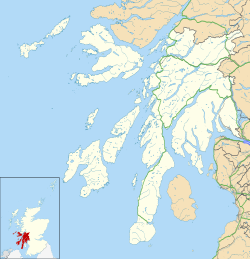Acha
| |
|---|---|
 Acha Mill, a disused and converted watermill | |
Location within Argyll and Bute | |
| OS grid reference | NM1854 |
| Council area | |
| Lieutenancy area | |
| Country | Scotland |
| Sovereign state | United Kingdom |
| Post town | ISLE OF COLL |
| Postcode district | PA78 |
| Police | Scotland |
| Fire | Scottish |
| Ambulance | Scottish |
| UK Parliament | |
| Scottish Parliament | |
Acha (Scottish Gaelic : An t-Achadh, translating to "The Field") is a small hamlet on the Scottish island of Coll. [1]
